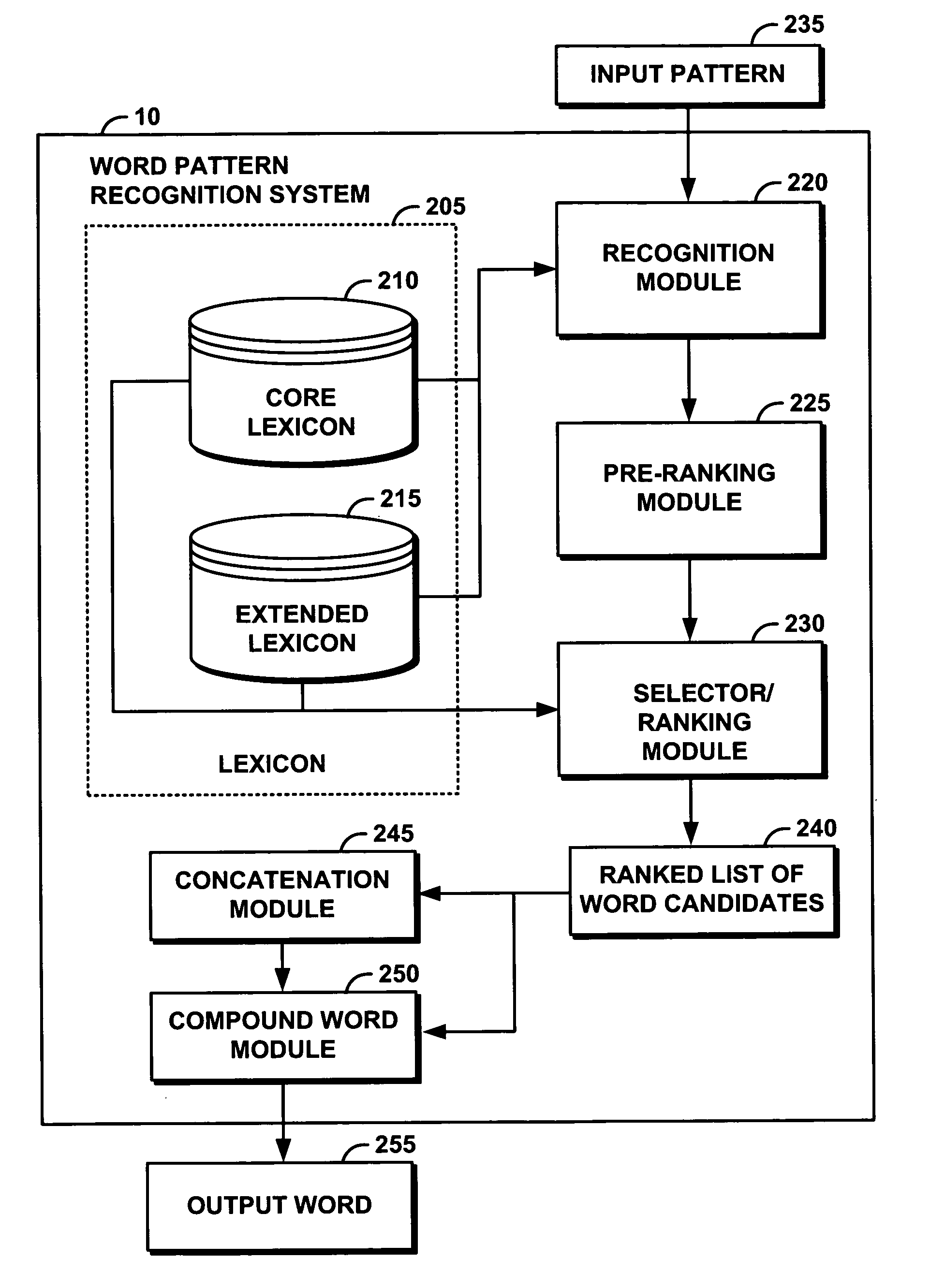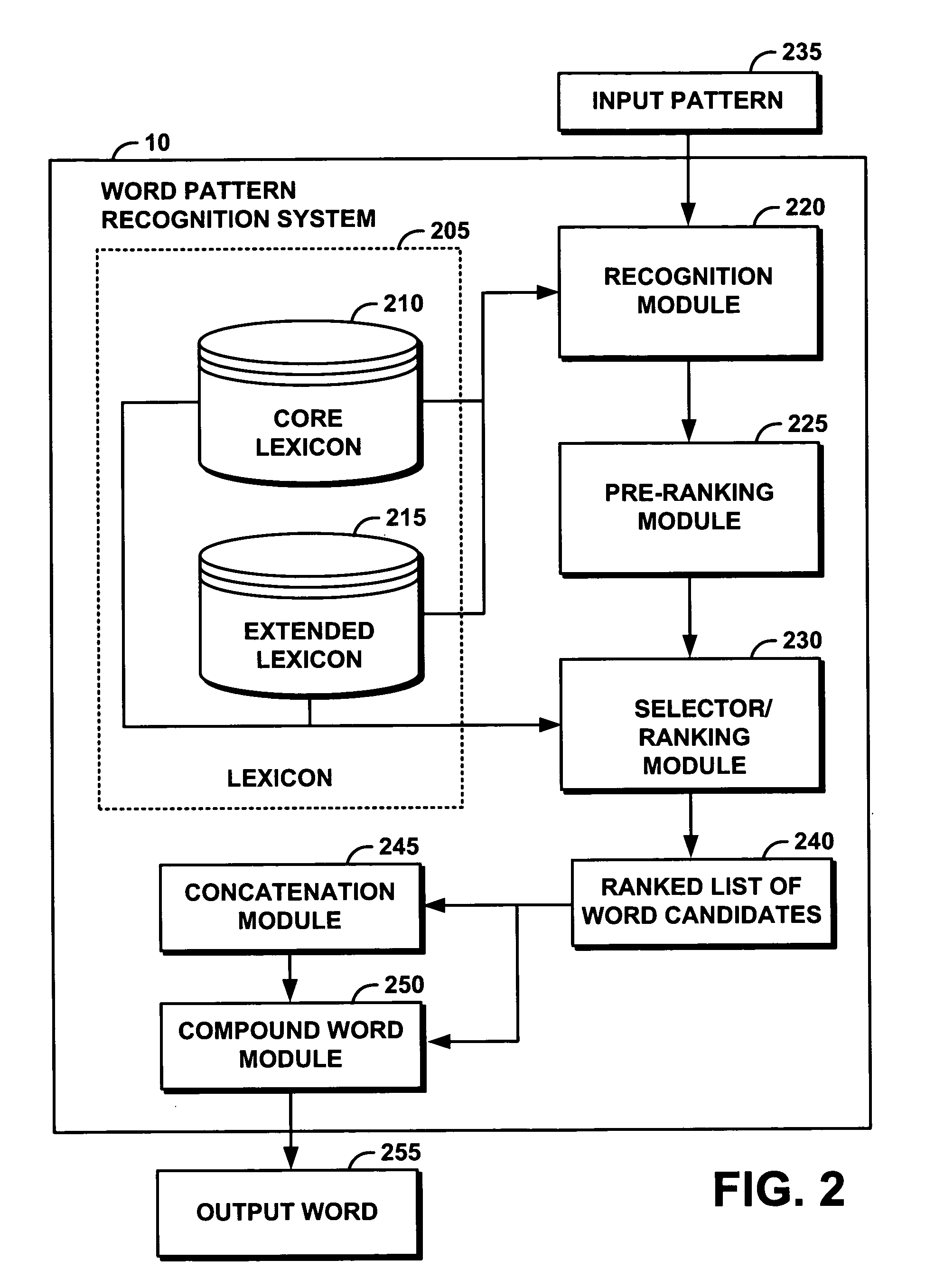System and method for improving text input in a shorthand-on-keyboard interface
a shorthand-on-keyboard and text input technology, applied in the field of lexicon-based text entry and text prediction systems, can solve the problems of reducing recognition accuracy, introducing problems to users, and noise, and achieve the effect of reducing the overhead inflicted on users
- Summary
- Abstract
- Description
- Claims
- Application Information
AI Technical Summary
Benefits of technology
Problems solved by technology
Method used
Image
Examples
Embodiment Construction
[0033] The following definitions and explanations provide background information pertaining to the technical field of the present invention, and are intended to facilitate the understanding of the present invention without limiting its scope:
[0034] Lexicon: a collection of elements defining the recognizable elements that can be matched against a user's input in a recognition system.
[0035] PDA: Personal Digital Assistant. A pocket-sized personal computer. PDAs typically store phone numbers, appointments, and to-do lists. Some PDAs have a small keyboard; others have only a special pen that is used for input and output on a virtual keyboard.
[0036] Sokgrah: Shorthand on a Keyboard as a Graph. A pattern representation of words on a virtual keyboard.
[0037] Virtual Keyboard: A computer simulated keyboard with touch-screen interactive capability that can be used to replace or supplement a keyboard using keyed entry. The virtual keys are typically tapped serially with a stylus. It is als...
PUM
 Login to View More
Login to View More Abstract
Description
Claims
Application Information
 Login to View More
Login to View More - R&D
- Intellectual Property
- Life Sciences
- Materials
- Tech Scout
- Unparalleled Data Quality
- Higher Quality Content
- 60% Fewer Hallucinations
Browse by: Latest US Patents, China's latest patents, Technical Efficacy Thesaurus, Application Domain, Technology Topic, Popular Technical Reports.
© 2025 PatSnap. All rights reserved.Legal|Privacy policy|Modern Slavery Act Transparency Statement|Sitemap|About US| Contact US: help@patsnap.com



